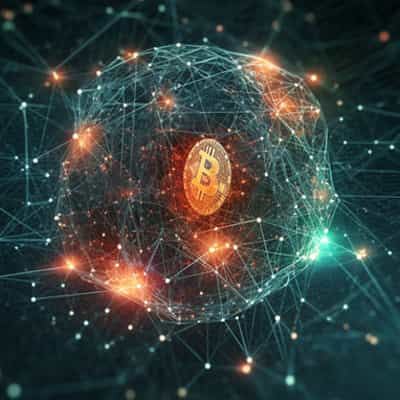Quantum Random Number Generators: Ushering in a New Era of Mobile Security
Sep. 24, 2024.
5 mins. read.
Interactions
Quantum mechanics meets smartphone security: Samsung’s Galaxy Quantum 5 introduces quantum-driven encryption, providing enhanced protection for personal data in today’s increasingly connected digital world.
RELATED ARTICLES
The latest innovation in Samsung’s mobile lineup, the Samsung Galaxy Quantum 5, introduces Quantum Random Number Generators (QRNGs) as a key feature for enhanced security. QRNGs leverage the inherent unpredictability of quantum mechanics to generate truly random numbers, which are crucial for encryption, authentication, and secure communications.
But what does this mean for everyday users? How does QRNG technology differ from the methods traditionally used in smartphones, and what role does it play in securing your personal data on the Galaxy Quantum 5? Let’s explore the mechanics of this advancement and compare QRNG with more conventional approaches.
Traditional RNG vs. Quantum RNG: What’s the Difference?
Most digital systems today, including smartphones, rely on Pseudo-Random Number Generators (PRNGs) for generating random numbers. PRNGs use algorithms and an initial seed value to produce sequences that appear random. However, because they are deterministic-algorithm-based, PRNGs are deterministic—meaning that if you know the seed or the algorithm, you can predict the sequence of numbers. Due to the nature of the algorithm, it’s very hard to actually predict what a deterministic random number is going to do, but in principle it’s possible if you set a large enough computer at the task for a long enough time.
Here’s a basic example of a PRNG in Python:
python
import random
# Seed the PRNG
random.seed(42)
# Generate a pseudo-random number
prng_number = random.randint(0, 100)
print(f”Pseudo-Random Number: {prng_number}”)
In contrast, Quantum Random Number Generators (QRNGs) use quantum phenomena to produce truly random numbers. QRNGs generate numbers based on the random behavior of quantum particles like photons, making them inherently unpredictable and non-reproducible. This provides a higher level of security for cryptographic purposes.
How Does QRNG Work in the Galaxy Quantum 5?
At the heart of Samsung’s Galaxy Quantum 5 is a QRNG chipset developed by ID Quantique. This chipset, measuring just 2.5mm x 2.5mm, is currently the world’s smallest QRNG. It works by detecting random quantum states of photons to generate truly random numbers, which are then used to create encryption keys and protect sensitive data.
Here’s a simple look at how a QRNG works in practice:
python
from qiskit import QuantumCircuit, transpile, Aer, execute
# Create a Quantum Circuit with one qubit
circuit = QuantumCircuit(1, 1)
# Apply a Hadamard gate to the qubit to put it in a superposition
circuit.h(0)
# Measure the qubit’s state
circuit.measure(0, 0)
# Use AerSimulator to execute the circuit
simulator = Aer.get_backend(‘aer_simulator’)
compiled_circuit = transpile(circuit, simulator)
result = execute(compiled_circuit, simulator, shots=1).result()
# Get the random bit (either 0 or 1)
random_bit = result.get_counts()
print(random_bit)
This code uses a quantum circuit to generate a truly random bit. In this example, the Hadamard gate is applied to a qubit to create a superposition—meaning the qubit exists in both the 0 and 1 states at the same time. When measured, the qubit collapses into either 0 or 1, generating a truly unpredictable bit.
In the quantum approach – unless the laws of physics as we currently understand them are wrong in some significant and relevant way – there is in principle no way for anyone to predict what numbers will be randomly generated. The laws of physics say there is no pattern.
In the Galaxy Quantum 5, this principle is applied on a larger scale, with the QRNG generating random numbers that are used for encryption, authentication, and securing data in applications like mobile banking, social media, and external storage.

Samsung Galaxy Quantum Series Comparison
The Samsung Galaxy Quantum series has progressively integrated QRNG technology to enhance mobile security. The Galaxy Quantum 5, the latest in the series, features a smaller, more advanced QRNG chipset compared to its predecessors. While the earlier models like the Galaxy Quantum, Quantum 2, and Quantum 4 introduced QRNG technology in various capacities, the Galaxy Quantum 5 expands its application significantly.
Compared to the previous models, the Galaxy Quantum 5 boasts a QRNG chipset that is not only smaller (2.5mm x 2.5mm) but also includes enhanced encryption capabilities and a Quantum Indicator feature. This indicator notifies users when an application is using quantum-secured services, providing additional transparency. The Galaxy Quantum 5 supports a wider range of QRNG-based apps, including those for games and service applications, and offers improved encryption for external memory.
The earlier models, such as the Galaxy Quantum and Quantum 2, provided basic QRNG-based encryption, with limited app support. The Quantum 4 introduced QRNG-based encryption for external memory, but it was the Galaxy Quantum 5 that expanded the scope of QRNG applications, including enhanced authentication and encryption of information.
Applications in the Samsung Galaxy Quantum 5
The Galaxy Quantum 5 integrates quantum technology deeply into its security features. Partnered with Samsung Knox, the device uses QRNG to enhance protection in various ways:
- Authentication: Whenever you use biometric data like fingerprints or facial recognition to log in, the encryption keys used to protect this data are generated by QRNG, ensuring they can’t be predicted or replicated.
- Secure Payments and Banking: QRNG provides extra layers of security for financial apps and mobile banking, protecting sensitive information like payment details and banking credentials.
- Social Media and Gaming: With QRNG technology, even apps unrelated to finance—like social media and games—can take advantage of quantum-enhanced security, ensuring your data is safe during login and in-app transactions.
Additionally, a “quantum indicator” feature alerts users when QRNG is actively securing an application, adding transparency and peace of mind.
What’s Next for Quantum Technology in Smartphones?
The Samsung Galaxy Quantum 5 represents a significant advancement in mobile security through its integration of QRNG technology. As quantum technology continues to evolve, we may see more devices adopting QRNG and other quantum-based solutions, offering stronger protection for personal data.
For now, the Galaxy Quantum 5 is primarily available in South Korea, but it sets a new standard for mobile security. The introduction of QRNG technology could pave the way for broader adoption of quantum-enhanced security in mobile devices worldwide.
Conclusion
The Samsung Galaxy Quantum 5 is a notable step forward in mobile security with its use of Quantum Random Number Generator (QRNG) technology. This device provides an additional layer of protection against potential security threats, especially in high-risk applications like mobile banking and secure communications.
For those interested in exploring the technology further, including a web-based implementation of QRNG, you can find the complete project on my GitHub: https://github.com/Hope-Alemayehu/trulyRandom.
Let us know your thoughts! Sign up for a Mindplex account now, join our Telegram, or follow us on Twitter.

.png)

.png)


.png)





0 Comments
0 thoughts on “Quantum Random Number Generators: Ushering in a New Era of Mobile Security”